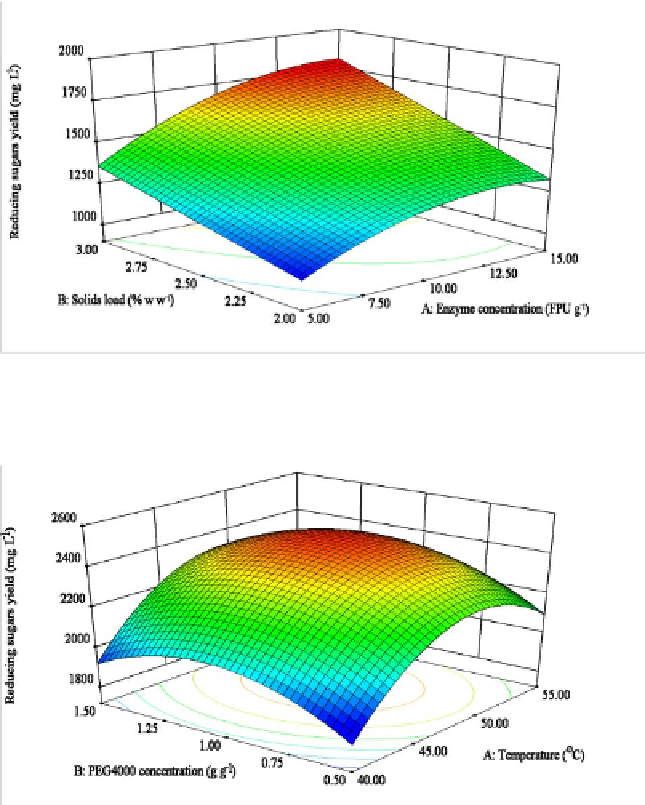Agriculture Reference
In-Depth Information
Applied acidic pretreatment proved to be successful in preparing sugar beet shreds for
cellulases action providing increase in hydrolysis yield 1.65 times in comparison to untreated
ones (Figure 2). Statistical analysis showed significance of the models for reducing sugars
yield as response in which PEG molecular weight/PEG concentration, enzyme
concentration/solids load and temperature/PEG 4000 concentration were independent
variables. The highest reducing sugars concentration was achieved under next conditions - 1 g
PEG 4000/g substrate, 47.5
o
C, enzyme concentration 10 FPU/g and 3% (w/w) solids load,
representing 1.6-fold increase in hydrolysis yield in comparison to the one obtained at lower
temperature and solids load and in absence of PEG (Figures 3 and 4). Addition of PEG opens
the possibility to reduce the both consumption of enzyme and time of hydrolysis without
decreasing in yield of reducing sugars. In addition, it was indicated that by addition of
polyethylene glycol 4000 at 1 g/g substrate, enzyme concentration and hydrolysis time could
be reduced by approximately two thirds and one third, respectively, without loss in sugars
yield [52]
.
Figure 3. Response surface of reducing sugars yield released by enzymatic hydrolysis of pretreated
sugar beet shreds as function of enzyme concentration and solids load; temperature 40
o
C; hydrolysis
time 48 h [52].
Figure 4. Response surface of reducing sugars yield released by enzymatic hydrolysis of pretreated
sugar beet shreds as function of temperature and PEG 4000 concentration; enzyme concentration 10
FPU/g, solids load 3% (w/w), hydrolysis time 48 h [52].


